Try GOLD - Free
15 AUTUMN STARGAZING TARGETS
All About Space UK
|Issue 160
Go on a night-sky treasure hunt as the brighter evenings give way to the cooler months

After the long, light, star-starved nights of summer, when many astronomers and skywatchers go into hibernation, autumn is finally here, and the sky is once again dark enough to see lots of amazing and beautiful things in the sky after the Sun has set. Here is a selection of some of the many star patterns, glittering star clusters and misty, faraway galaxies that can be seen in the sky at this time of year with the naked eye or binoculars. Wrap up warm and go and find them!
 1 MESSIER 31: THE ANDROMEDA GALAXY
1 MESSIER 31: THE ANDROMEDA GALAXY Look to the upper left of the Great Square of Pegasus on a dark, Moon-free autumn night and you'll see a misty smudge of light. This is actually Messier 31, a galaxy of around a trillion stars, making it twice as large as our Milky Way. 2.5 million light years away, it's the most distant object visible to the naked eye and a lovely sight in binoculars and telescopes.
 2 MESSIER 33: THE TRIANGULUM GALAXY
2 MESSIER 33: THE TRIANGULUM GALAXY Around a hand's width below Messier 31 is another galaxy, but Messier 33 is too faint to be seen with the naked eye. Binoculars will show it as a small, round, hazy spot. Only half the size of our Milky Way, it's a spiral galaxy we see face on. It's the third-largest galaxy in the Local Group of galaxies.
 3 MESSIER 15: GLOBULAR CLUSTER IN PEGASUS
3 MESSIER 15: GLOBULAR CLUSTER IN PEGASUS Messier 15 is a huge, spherical cluster of around 360,000 stars. The naked eye can make it out as a hazy spot, but binoculars give a clearer view. 35,700 light years away, Messier 15 is around 13.2 billion years old, making it one of the oldest known star clusters.
This story is from the Issue 160 edition of All About Space UK.
Subscribe to Magzter GOLD to access thousands of curated premium stories, and 10,000+ magazines and newspapers.
Already a subscriber? Sign In
MORE STORIES FROM All About Space UK

All About Space UK
MYSTERIES OF THE UNI WHERE ARE ALL THE SPIRAL GALAXIES?
There are far fewer spiral galaxies than elliptical ones in the Supergalactic Plane, and scientists are keen to discover why
7 mins
Issue 161
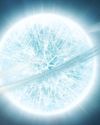
All About Space UK
ZOMBIE STARS
+10 OTHER TERRIFYING SPACE OBJECTS
8 mins
Issue 161

All About Space UK
HOW TO BEAT LIGHT POLLUTION
Thought it was impossible to observe the wonders of the night sky from towns and cities? Think again. Follow our tips and tricks on successfully observing through sky glow
2 mins
Issue 161
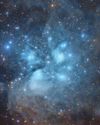
All About Space UK
15 STUNNING STAR CLUSTERS
These beautiful stellar groupings are spattered across the cosmos
8 mins
Issue 161

All About Space UK
Eileen Collins "It was a difficult mission...we were the first to see Mir"
Having served as both the first female pilot and first female commander of NASA's Space Shuttle, Collins boosted the involvement of women in space exploration to a whole new level
9 mins
Issue 161
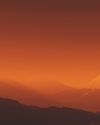
All About Space UK
MARS LEAKS FASTER WHEN IT'S CLOSER TO THE SUN
The Red Planet has lost enough water to space to form a global ocean hundreds of kilometres deep
2 mins
Issue 161

All About Space UK
FUTURE TECH KANKOH-MARU
This ambitious reusable spacecraft will be capable of taking 50 people to and from orbit
2 mins
Issue 161

All About Space UK
THE FINAL FRONTIER
Beyond the reach of the Sun is a fascinating region of the cosmos that were only just beginning to explore
8 mins
Issue 161
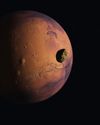
All About Space UK
A long-lost moon could explain Mars' weird shape and extreme terrain
A long-lost moon could explain why Mars is so different from the other rocky planets in the Solar System. Today Mars has two tiny moons.
2 mins
Issue 161
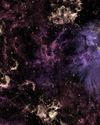
All About Space UK
A sprinkling of cosmic dust may have helped kick-start life on Earth
Cosmic dust may have helped kick-start life on Earth. New findings challenge a widely held assumption that this wasn't a plausible explanation.
3 mins
Issue 161
Listen
Translate
Change font size
